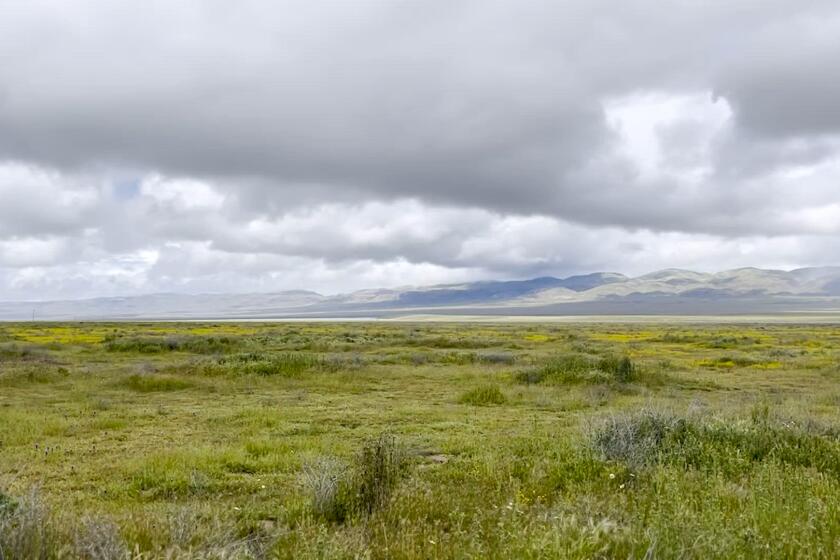What to do with Mammoth’s mountains? Town’s new ‘snow pit’ frees up room to push fresh powder
It seems a child’s parable, as if the mythical city of El Dorado had too much gold. But Mammoth Lakes, a winter recreation outpost that often has too little snow, now has far too much.
In what is shaping up to be the snowiest month on record, the Eastern Sierra town has created what it terms a snow pit just east of town, north of California 203.
Late last week, public and private snow removal operators began trucking snow there in an effort to create space for the huge crowds drawn by the tiny town’s snow globe conditions.
“We think that’s a great problem to have,” Public Works Director Grady Dutton told The Times on Thursday. “We actually have a contract with an operator who manages [the snow pit] on our behalf.”
Beginning Jan. 3, the resort town of 8,200 saw a string of blizzards drop 164 inches of snow. Since record keeping began in 1969, that’s the highest monthly total except for December 2010, when 209 inches fell.
That record could be eclipsed by the current series of winter storms, which are expected to dump 3 to 5 feet before moving out Tuesday. Indeed, heavy snow was hitting the town Friday again morning.
That’s great news for the resort town, where snow is the coin of the realm. But such accumulations pose problems for removing all that powder, which plows often push into corners of large parking lots — at least till they’re full. Those heavy piles are what are currently being trucked outside of town.
The plow operators’ overtime and any additional costs will be partly offset by taxes generated by increases in visitors and high hotel occupancy. Dutton also cited a state program that he says reimburses cities half of their snow removal costs.
“Snow management, especially for our most-used routes, is not really an option,” Dutton said. The town official called it “absolutely necessary for public safety.”
Visitors should be aware that ordinances prohibit parking on town roads through April 1, to allow for snow removal.
“We strongly encourage visitors and residents to leave their cars parked and take advantage of …free transit,” Dutton said.
The service operates daily from 7 a.m. to 2 a.m.
Twitter: @LATimestravel
ALSO
What’s new at ski resorts across the West
You won’t recognize Northstar at Lake Tahoe
Sign up for The Wild
We’ll help you find the best places to hike, bike and run, as well as the perfect silent spots for meditation and yoga.
You may occasionally receive promotional content from the Los Angeles Times.




